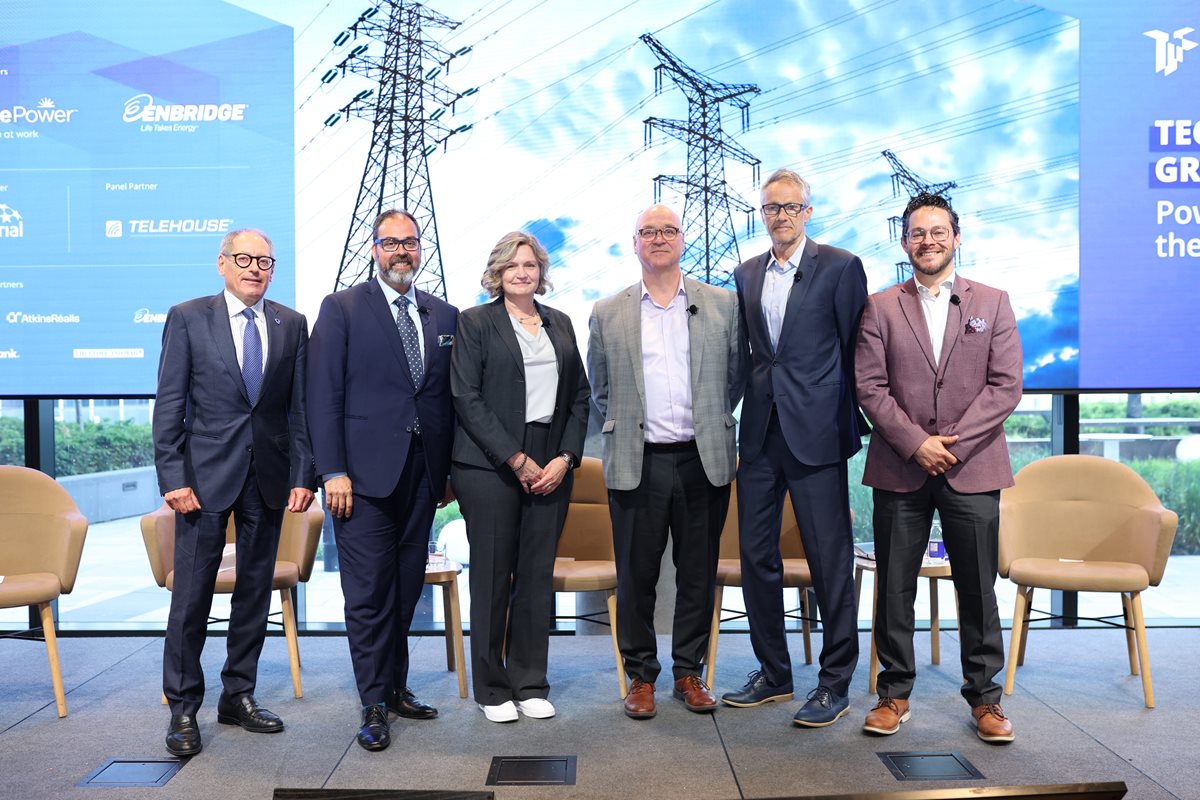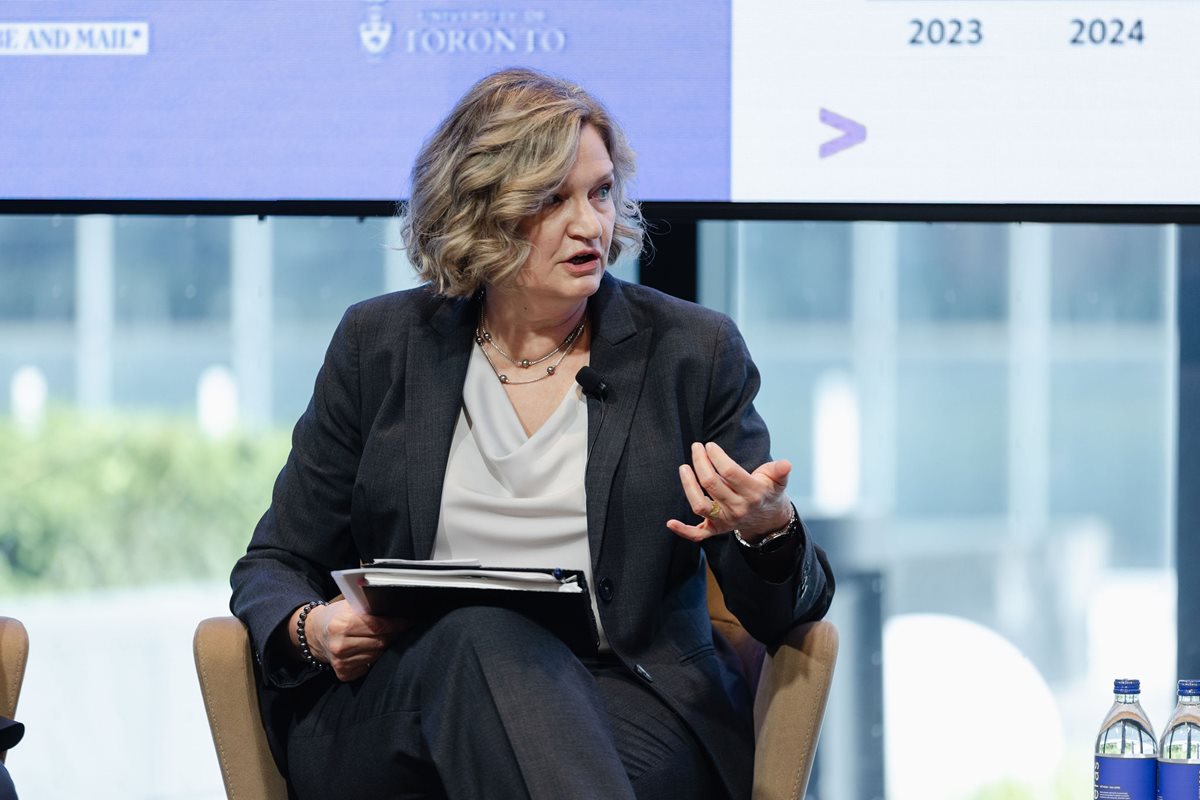
For years, Ontario’s electricity demand was flat, but alongside population growth, transit electrification, and EVs, the rise of data centres, driven by artificial intelligence, is pushing it into overdrive.
Ontario starts from a position of strength. We have a clean, reliable grid. We’re already ahead of most jurisdictions in decarbonizing supply. But that advantage is under pressure. Demand is becoming harder to forecast, new energy infrastructure takes several years to build, and regulatory approvals haven’t kept pace with economic ambition.
This is an inflection point. In the last two weeks alone, Energy and Mines Minister Stephen Lecce announced a third transmission line into Toronto and unveiled a new provincial energy plan clear signals that Ontario is racing to meet an energy future that’s arriving faster than expected. That urgency framed our latest event in the Energy Breakfast Series: Tech Growth, Grid Strain: Powering the AI Economy.
Power is becoming Ontario’s most important economic asset
For more than a decade, electricity demand in Ontario barely budged. But the proliferation of AI-powered data centres is changing that almost overnight. While our province has the right fundamentals – including a strong operator, robust baseload nuclear generation and a reliable and flexible natural gas supply – the challenge now is how fast we can respond to this growing demand on our energy resources.
AI is turning data centres into the grid’s biggest unknown
Data centres once behaved like predictable loads. That’s no longer true. These facilities now run near peak around the clock, driven by GPU-intensive workloads. They’re behaving more like system stressors than passive users pushing Ontario’s planning tools and operating reserves into new territory.
Infrastructure timelines no longer match economic urgency
Ontario has the generation assets to meet current demand projections, but building new energy projects take time, often seven years or more, and data centres are typically looking to go live within months. That mismatch creates a potential drag on growth.
Gas is the bridge that’s helping major projects power up
While Ontario pursues electrification, many large facilities are turning to natural gas to fill the gap, especially when transmission access lags. Enbridge is seeing strong demand for solutions that offer reliability now, and resilience over time.
Permitting delays are the biggest threat to grid expansion
Ontario knows how to build. We’ve refurbished nuclear, integrated renewables, and planned for the long term. But what’s slowing us down now isn’t engineering, it’s red tape. To unlock Ontario’s next wave of growth, we need faster approvals and clearer alignment between regulators, policymakers, and industry.
8,400 MW
Projected demand from new data centres seeking to connect to Ontario’s grid, that’s equal to one-third of the province’s current peak capacity.
300 MW
Average load of a single data centre, on par with Ontario’s largest industrial users. Some data centres may exceed 1,000 MW.
7 years
Time it takes to build new transmission lines, far slower than the pace of new demand coming online.
75%
Projected growth in Ontario’s electricity demand by 2050.
100%
Toronto’s electricity demand is expected to double over the next 25 years, compared to current levels.
82
Data centres currently operating in Toronto, representing nearly 40% of Canada’s total.

“A few years ago, our long-term demand forecast predicted about 60% growth by 2050. But two years ago, we had to revise that to 75%. Why? Data centres. And it keeps moving. Our latest queue includes 8,400 megawatts of data centre demand. That’s one-third the size of Ontario’s entire electricity system today. They’re that big and they’re arriving that fast.”
— Chuck Farmer, Chief Energy Transition Officer, IESO

"We’ve been thinking about electrification in terms of vehicles, homes, heating. But the AI economy changes the scale entirely. The most eye-popping number I’ve seen recently was NVIDIA’s power demand, more than 1,000 megawatts for a single campus. That’s the size of a nuclear reactor. When you’re building one of those at a time, that’s not just growth it’s transformation. If we’re not planning for this scale now, we’re going to fall behind."
— Pat Dalzell, VP, Corporate Affairs and Market Development, Bruce Power
“If you’re a global tech player looking to locate a new data centre, there are two things you need to know: can you get power, and can you get it when you need it? Ontario has a lot to offer, but reliability and speed to connect will be the deal-breakers. That’s the conversation we’re having today because the market’s not going to wait.”
— Andy Fenton, VP, Sales & Marketing, Telehouse Canada

“There’s no silver bullet. We need every tool in the kit, hydrogen, storage, nuclear, renewables. But what worries me is the runway. These projects take years. We need to be thinking now about where the demand will be five or ten years from now, and start building accordingly. Because we won’t get a second chance to catch up.”
— Heidi Bredenholler-Prasad, VP, Strategy and Business Development, Enbridge Gas
“We’re not just talking about kilowatts and connections, we’re talking about whether Ontario can lead the next wave of economic growth. That comes down to this: can we deliver power when it’s needed, at the scale required, and without delay? If we want to compete in the AI economy, we have to be able to say yes.”
— Giles Gherson, President & CEO, Toronto Region Board of Trade
Thank you to our partners:

